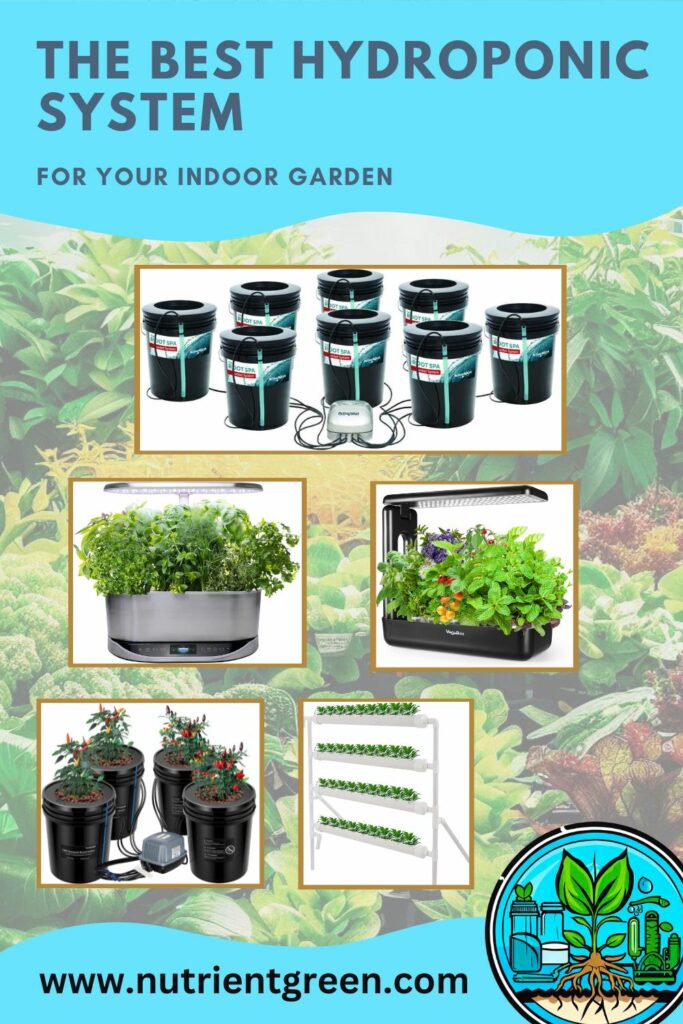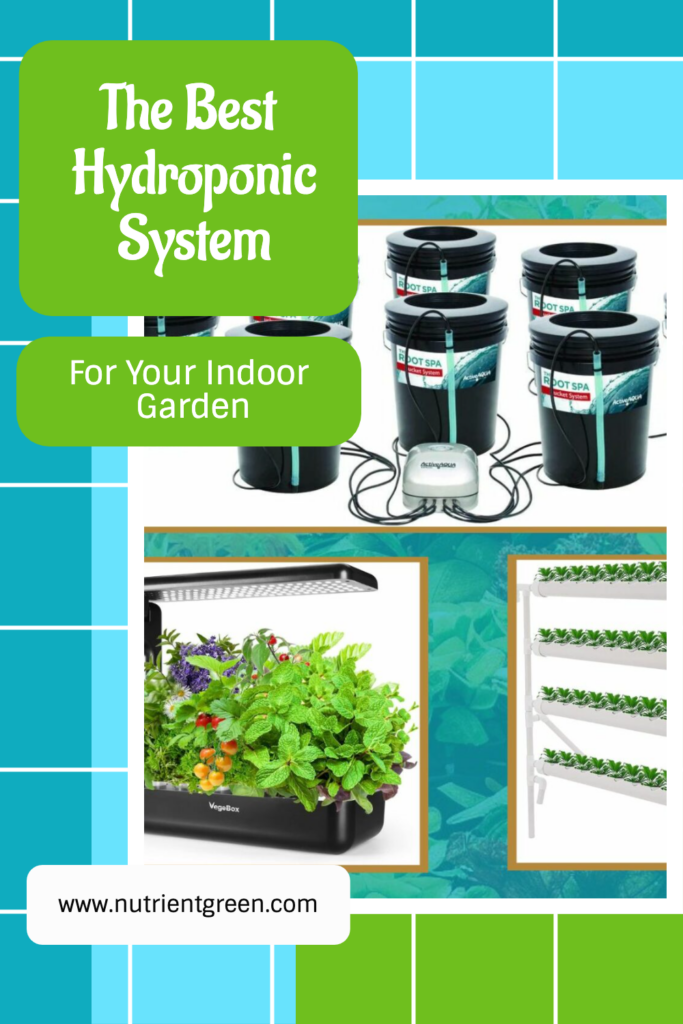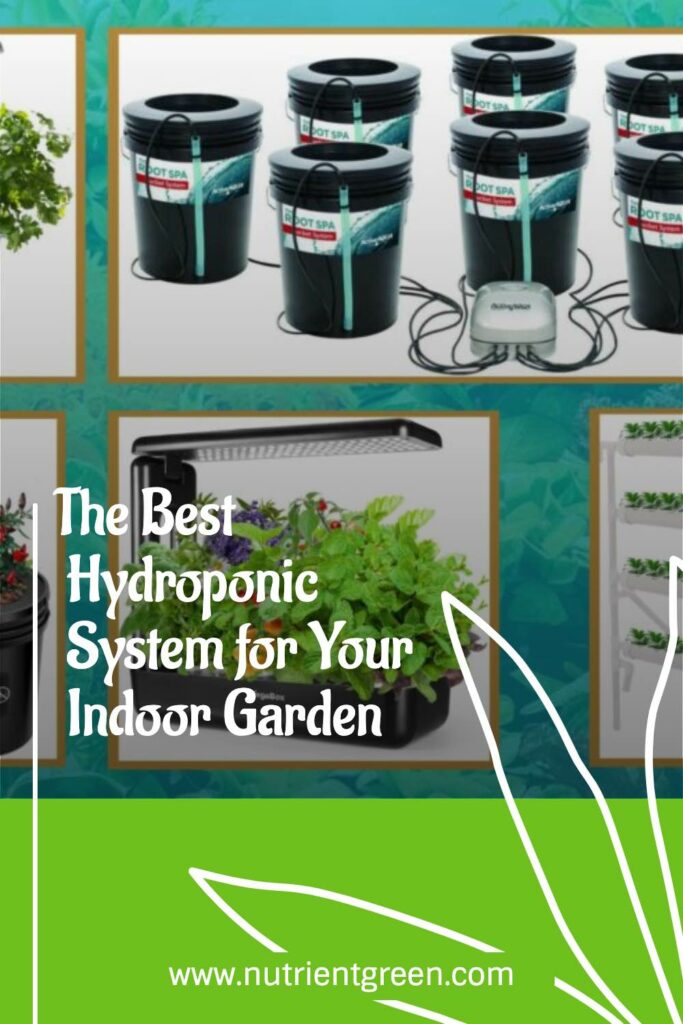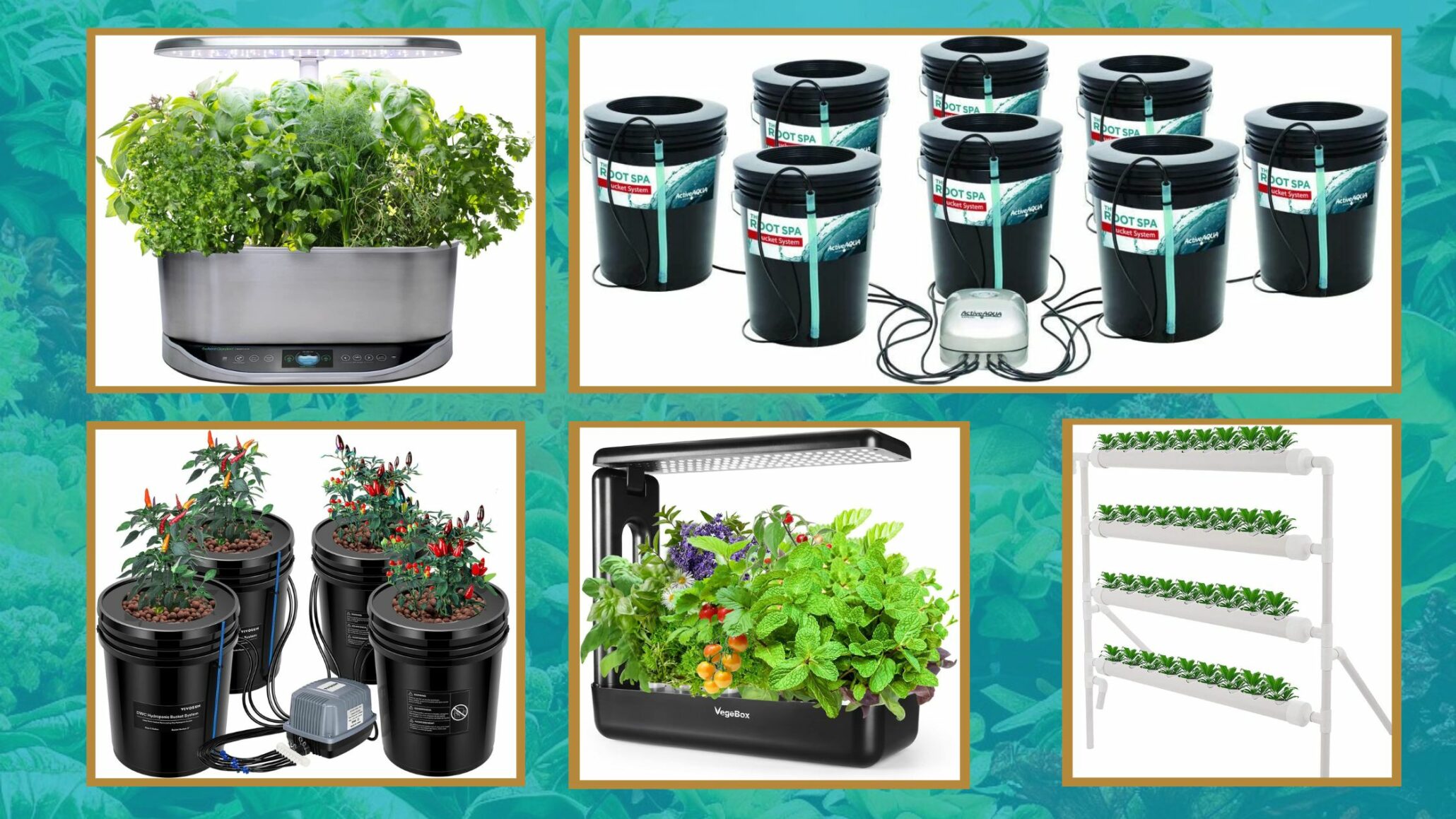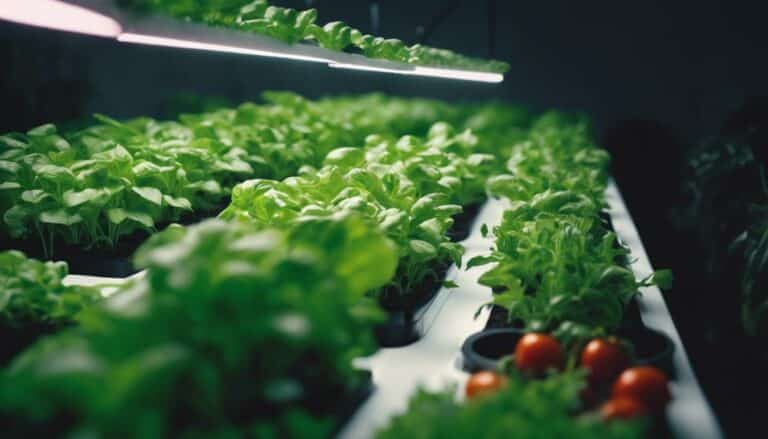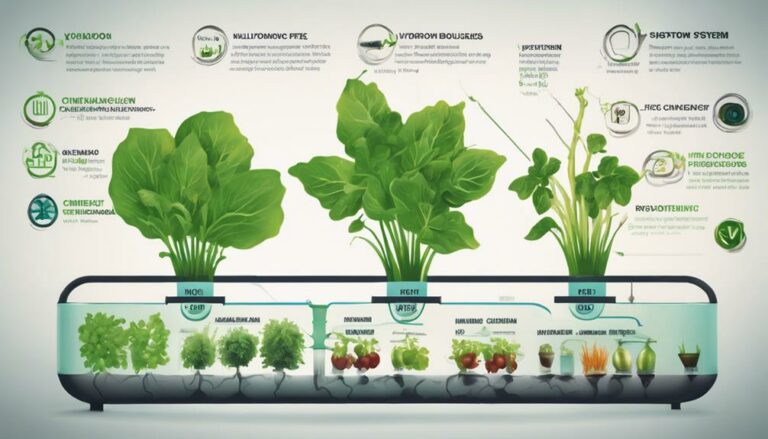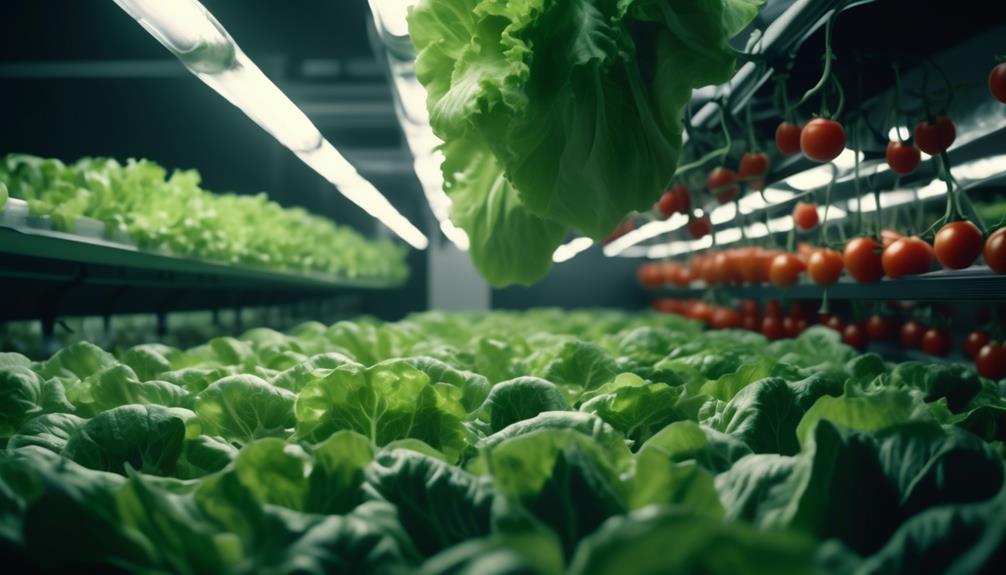Have you ever dreamed of growing your own fresh and healthy food at home, without worrying about soil, pests, or weather? If so, you might want to consider hydroponics, a method of growing plants in water instead of soil. Today we’ll explore how to find the best hydroponic system for Your needs.
Table of Contents
Introduction
Hydroponics is not a new concept, but it has become more popular in recent years due to its many benefits, such as:
- Saving water and space
- Increasing yield and quality
- Reducing pests and diseases
- Extending the growing season
- Offering more control and flexibility
But how do you get started with hydroponics? What do you need to know before you buy or build your own hydroponic system? And which type of system is best for your needs and preferences?
In this guide, we will answer these questions and more. We will explain the basics of hydroponics, the pros and cons of different types of systems, and how to choose the best one for you. We will also review some of the best hydroponic systems on the market, based on our research and experience.
By the end of this guide, you will have a clear idea of what hydroponics is, how it works, and what you need to get started. You will also be able to compare and contrast different options and make an informed decision.
So, let’s dive in!
Types of Hydroponic Systems: Pros and Cons
There are six main types of hydroponic systems, each with its own advantages and disadvantages. They differ in how they deliver water, nutrients, and oxygen to the plant roots. Here is a brief overview of each type:
Wick System: The simplest and cheapest option
A wick system is the most basic type of hydroponic system. It consists of a reservoir filled with nutrient solution, a growing medium (such as perlite, vermiculite, or coco coir), and a wick that connects them. The wick draws the nutrient solution from the reservoir to the growing medium, where the plant roots absorb it.
The main advantage of a wick system is that it is very simple and cheap to set up and maintain. It does not require any pumps, timers, or electricity. It is also very reliable and stable, as there is no risk of power outage or pump failure.
The main disadvantage of a wick system is that it is not very efficient or productive. It can only support small plants with low water and nutrient requirements, such as herbs or lettuce. It can also cause nutrient imbalance or salt buildup in the growing medium over time.
Deep Water Culture (DWC): The easiest and most popular option
A deep water culture (DWC) system is one of the most common types of hydroponic systems. It consists of a reservoir filled with nutrient solution, a net pot or basket that holds the plant and some growing medium (such as clay pebbles or rockwool), and an air pump that bubbles air into the reservoir. The plant roots hang down into the nutrient solution, where they receive constant access to water, nutrients, and oxygen.
The main advantage of a DWC system is that it is very easy and inexpensive to set up and operate. It does not require much maintenance or monitoring, as long as the water level, pH, and nutrient concentration are kept in check. It also supports fast and vigorous plant growth, especially for leafy greens and herbs.
The main disadvantage of a DWC system is that it can be prone to root rot, algae growth, and temperature fluctuations. It also requires a lot of water and nutrients, which can be wasteful and costly. It is not suitable for large or heavy plants, such as tomatoes or peppers.
Ebb and Flow System: The versatile and customizable option
The ebb and flow system, also referred to as a flood and drain system, represents a hydroponic setup that cyclically floods and drains the growing medium with nutrient solution. It comprises a nutrient-filled reservoir, a tray or container containing plants and the chosen growing medium (such as gravel, sand, or expanded clay), a pump responsible for transferring the nutrient solution from the reservoir to the tray, and a timer that regulates the pump’s operation. By flooding the tray for a designated duration and subsequently draining it back to the reservoir, this system ensures that plant roots receive a sufficient supply of water, nutrients, and oxygen.
One of the key advantages of the ebb and flow system lies in its versatility and adaptability. It can accommodate various plant types and sizes, as well as different depths and types of growing media. Additionally, it offers the flexibility to be scaled up or down based on space availability and budget considerations. Furthermore, this system demonstrates high efficiency and productivity, creating optimal conditions for robust plant growth.
However, it’s important to consider the potential drawbacks of the ebb and flow system. Compared to other hydroponic systems, it tends to be more intricate and costly. Additional equipment like pumps, timers, valves, and tubing is required, contributing to increased complexity and expenses. Furthermore, regular maintenance and monitoring are essential to ensure the pump, timer, and water levels are functioning optimally. It’s worth noting that power outages or pump failures can pose risks, potentially leading to plant dehydration or overwatering if not promptly addressed.
Drip System: The precise and efficient option
A drip system, classified as a hydroponic system, operates by delivering nutrient solution individually to each plant via a network of tubes and emitters. This system comprises a nutrient reservoir, a pump responsible for propelling the nutrient solution through the tubes, a timer regulating the pump, and emitters that gradually release the nutrient solution onto the plant roots or the chosen growing medium, such as soilless mix or coco coir. Any excess nutrient solution can either drain back to the reservoir or be discarded.
The primary advantage of a drip system lies in its precision and efficiency. It allows for meticulous control over the amount and frequency of water and nutrients supplied to each plant, contributing to improved plant health and increased yields. Furthermore, this system promotes water and nutrient conservation by minimizing waste or runoff.
However, it is important to consider the potential drawbacks associated with a drip system. Compared to other hydroponic systems, it tends to be more complex and costly. Additional equipment, including pumps, timers, tubes, emitters, filters, and pressure regulators, is required, adding to the overall intricacy and expenses involved. Furthermore, regular maintenance and monitoring are necessary to ensure the cleanliness and proper functioning of the tubes, emitters, filters, and pressure regulators. It is also important to address potential issues such as clogging or leaking promptly, as they can impact plant growth or lead to flooding.
Nutrient Film Technique (NFT): The fast and productive option
A nutrient film technique (NFT) system represents a hydroponic system that employs a thin film of nutrient solution to flow over the plant roots. It consists of a nutrient-filled reservoir, a pump that circulates the nutrient solution through a series of channels or pipes, and net pots or baskets containing the plants and a selected growing medium like rockwool or foam. The plant roots are exposed to the flowing nutrient solution within the channels or pipes, receiving water, nutrients, and oxygen.
The primary advantage of an NFT system lies in its rapid and productive nature. It facilitates continuous and accelerated plant growth, particularly beneficial for cultivating leafy greens and herbs. Moreover, this system boasts water and nutrient efficiency as it minimizes runoff and evaporation.
However, it is essential to consider the potential drawbacks associated with an NFT system. Compared to other hydroponic systems, it is relatively delicate and carries inherent risks. A constant flow of nutrient solution is necessary to prevent the plant roots from drying out or becoming oxygen-deprived. Careful monitoring of pH levels and nutrient concentrations is vital to prevent nutrient deficiencies or toxicities. Furthermore, the system is susceptible to clogging, leaking, or power outages, which can potentially damage the plants or disrupt the overall functionality of the system.
Aeroponics: The advanced and innovative option
An aeroponics system serves as an advanced hydroponic method that utilizes mist or fog to supply water, nutrients, and oxygen directly to the plant roots. It encompasses a nutrient reservoir, a pump that atomizes the nutrient solution into fine droplets, a timer controlling the pump’s operation, and a chamber or enclosure where the plants are suspended, allowing their roots to be exposed to the air. The pump is programmed to periodically spray the nutrient solution onto the plant roots, enabling efficient absorption.
The primary advantage of an aeroponics system lies in its cutting-edge and innovative nature. It creates an optimal environment for plant growth, ensuring that the roots receive maximum exposure to water, nutrients, and oxygen. Moreover, this system demonstrates exceptional water and nutrient efficiency, minimizing waste and runoff.
However, it is crucial to consider the potential drawbacks associated with an aeroponics system. Compared to other hydroponic systems, it tends to be more complex and expensive. The system necessitates additional equipment, such as pumps, timers, nozzles, filters, and sensors. Regular maintenance and monitoring are essential, including checking and cleaning the nozzles, filters, sensors, and water levels at regular intervals. Furthermore, the system is sensitive to potential issues like clogging, leaking, or power outages, which can have detrimental effects on the plants or the overall functionality of the system.
Table: Comparison of Hydroponic Systems
| Hydroponic System | Description | Space Requirement | Complexity | Maintenance | Water Efficiency | Nutrient Efficiency |
|---|---|---|---|---|---|---|
| Wick System | Simple and low-cost system with a passive nutrient flow | Small | Low | Low | Moderate | Moderate |
| Deep Water Culture (DWC) | Plant roots are suspended in nutrient-rich water | Medium | Low | Moderate | High | High |
| Ebb and Flow System | Alternating flooding and draining of the growing medium | Medium | Moderate | Moderate | High | High |
| Drip System | Nutrient solution is delivered through tubes and emitters | Medium | Moderate | Moderate | High | High |
| Nutrient Film Technique (NFT) | Thin film of nutrient solution flows over the plant roots | Large | Moderate | Moderate | High | High |
| Aeroponics | Nutrient solution is misted or fogged onto the plant roots | Large | High | High | High | High |
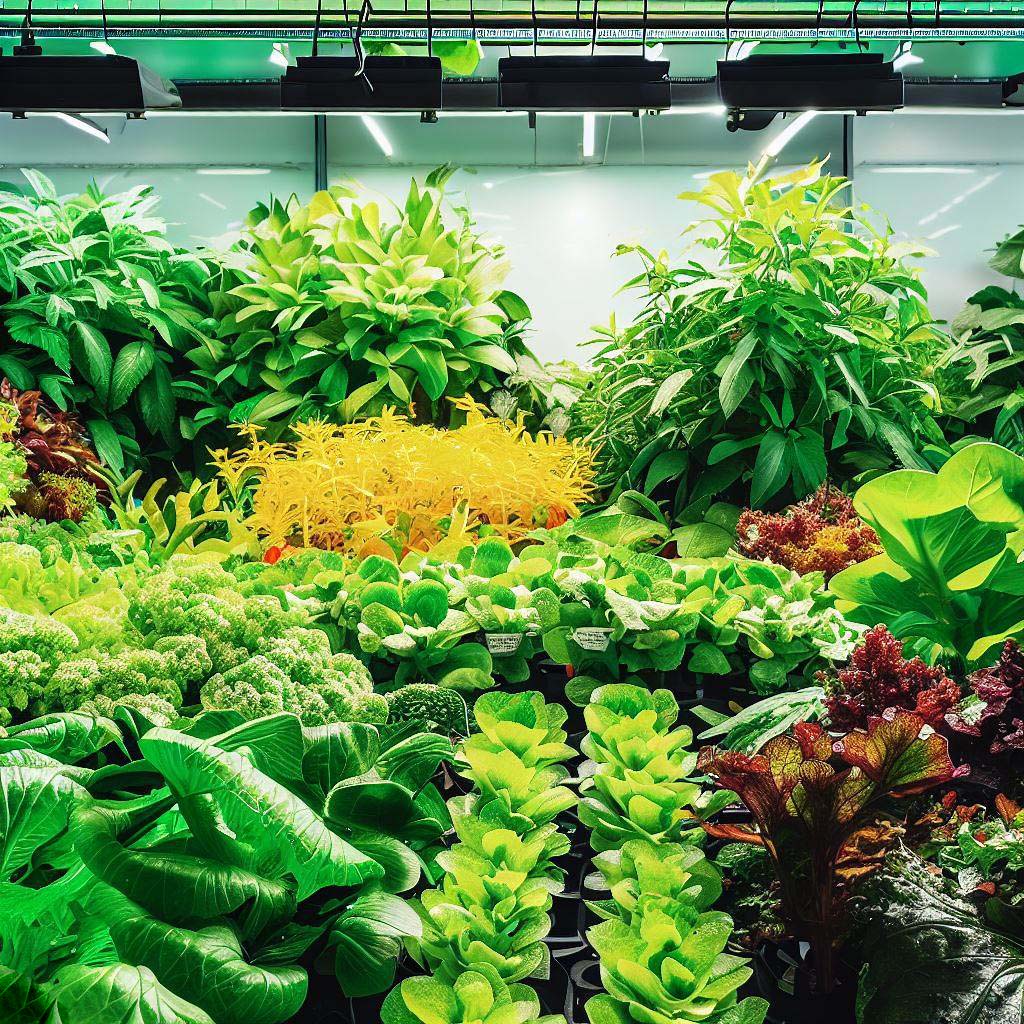
How to Choose the Best Hydroponic System for Your Needs
Choosing the best hydroponic system for your needs involves considering several important factors. Here are some key points to consider when making your decision:
1. Budget, Space, and Skill Level: Evaluate your financial resources, available space, and your level of expertise in hydroponics. Determine how much you’re willing to invest and the complexity of the system you feel comfortable with.
2. Type, Size, and Number of Plants: Consider the specific plants you want to grow and their individual needs. Different hydroponic systems are better suited for particular types of plants, so choose a system that aligns with the requirements of your chosen crops.
3. Maintenance, Monitoring, and Troubleshooting: Assess the level of maintenance, monitoring, and troubleshooting required by each system. Some systems are more reliable and stable, while others may require more frequent attention and adjustment.
For example, if you have a limited budget and space, and are new to hydroponics, a wick system or DWC system may be suitable. They are easy to set up and maintain, but may have limitations in supporting larger or heavier plants.
If you have a larger budget and space, and are willing to invest more time and effort, an ebb and flow system or aeroponics system may be worth considering. They offer versatility and the potential to accommodate various plant types and sizes, but require more equipment, maintenance, and monitoring.
Consider the trade-offs between cost, simplicity, efficiency, and the specific needs of your plants. By carefully evaluating these factors, you can select the hydroponic system that best aligns with your goals, resources, and level of commitment.
Our Top Picks for the Best Hydroponic Systems
Based on our research and experience, we have selected some of the best hydroponic systems on the market for different types of growers and plants. Here are our top picks:
DreamJoy Hydroponic Grow Kit: The best vertical NFT system for small spaces

If you are looking for a vertical NFT system that can fit in small spaces, we recommend the DreamJoy Hydroponic Grow Kit. This system is designed to save space and maximize production, as it can accommodate up to 90 plants in 10 pipes, each with 9 plant spaces. It is also easy to use and maintain, as it comes with a pump, a timer, a water tank, and all the necessary accessories.
The DreamJoy Hydroponic Grow Kit is suitable for hobbyists and professionals, as it is practical and efficient in its application. It is also durable and sturdy, as it is made of high-quality PVC material. It can support leafy greens and herbs, such as lettuce, spinach, basil, mint, etc.
VegeBox Hydroponics Growing System: The best smart garden system for indoor growing

If you are looking for a smart garden system that can grow plants indoors, we recommend the VegeBox Hydroponics Growing System. This system is designed to provide optimal conditions for plant growth, such as full spectrum LED lights, automatic watering, and smart reminders. It can accommodate up to 28 plants in a sleek and stylish design that looks great on any countertop or table. It also comes with a nutrient solution, a seedling sponge, and a measuring cup.
The VegeBox Hydroponics Growing System is suitable for beginners and busy people, as it is very easy and convenient to set up and operate. It does not require any soil, mess, or hassle. It is also very reliable and eco-friendly, as it uses low energy consumption and high efficiency. It can support leafy greens and herbs, such as lettuce, spinach, basil, mint, etc.
VIVOSUN Hydroponic Grow Kit: The best ebb and flow system for large plants

If you are looking for an ebb and flow system that can support large plants, we recommend the VIVOSUN Hydroponic Grow Kit. This system is designed to provide versatile and customizable growing experience, as it allows you to adjust the flooding and draining cycles, the water level, the pH, and the nutrient concentration. It can accommodate up to 12 plants in individual pots that can be moved around or replaced easily. It also comes with a pump, a timer, a reservoir, a tray, and clay pebbles.
The VIVOSUN Hydroponic Grow Kit is suitable for intermediate and advanced growers, as it requires more equipment and maintenance than other types of systems. It is also very durable and high-quality, as it is made of premium materials and components. It can support large or heavy plants, such as tomatoes, peppers, cucumbers, etc.
Hydrofarm Active Aqua Root Spa: The best DWC system for beginners and budget-conscious growers

If you are looking for a simple and inexpensive DWC system for growing small plants, we recommend the Hydrofarm Active Aqua Root Spa. This system is designed to provide easy and convenient growing experience, as it comes with everything you need to get started. It has one bucket that holds one plant and comes with an air pump, an air stone, a grommet, a tubing, and a net pot.
The Hydrofarm Active Aqua Root Spa is suitable for beginners and budget-conscious growers, as it is easy to set up and operate, and it does not cost much. It is also popular and well-reviewed by many users, who praise its simplicity and effectiveness. It can support small plants, such as lettuce, spinach, kale, basil, mint, etc.
AeroGarden Bounty Elite: The best aeroponics system for advanced and innovative growing

If you are looking for an advanced and innovative aeroponics system for growing large or tall plants, we recommend the AeroGarden Bounty Elite. This system is designed to provide optimal conditions for plant growth, as it uses mist or fog to deliver water, nutrients, and oxygen to the plant roots. It can accommodate up to 9 plants in a vertical tower structure that saves space and looks attractive. It also comes with a full spectrum LED light, a touchscreen control panel, a Wi-Fi connection, a nutrient solution, and a seed pod kit.
The AeroGarden Bounty Elite is suitable for advanced and adventurous growers, as it requires more investment and maintenance than other types of systems. It is also very innovative and unique, as it uses a patented technology that creates a microclimate for the plants. It can support large or tall plants, such as kale, chard, broccoli, and melons.
Table 1: Comparision of specifics
| Product | Type | Capacity | Features |
|---|---|---|---|
| DreamJoy Hydroponic Grow Kit | Vertical NFT | 90 plants | Pump, reservoir, timer, accessories |
| VegeBox Hydroponics Growing System | Smart garden | 28 plants | LED lights, automatic watering, smart reminders, nutrient solution, seedling sponge, measuring cup |
| VIVOSUN Hydroponic Grow Kit | Ebb and flow | 12 plants | Pump, timer, reservoir, tray, clay pebbles |
| Hydrofarm Active Aqua Root Spa | DWC | 1 plant | Air pump, air stone, grommet, tubing, net pot |
| AeroGarden Bounty Elite | Aeroponics | 9 plants | LED light, touchscreen control panel, Wi-Fi connection, nutrient solution, seed pod kit |
Conclusion
Hydroponics is a great way to grow your own fresh and healthy food at home, without worrying about soil, pests, or weather. However, it can also be confusing and overwhelming to choose the best hydroponic system for your needs and preferences.
That’s why we created this guide to help you understand the basics of hydroponics, the pros and cons of different types of systems, and how to choose the best one for you. We also reviewed some of the best hydroponic systems on the market, based on our research and experience.
We hope you found this guide helpful and informative. If you are ready to start your hydroponic journey, we encourage you to check out our top picks and see which one suits you best. You can also browse our website for more tips and resources on hydroponics.
Happy growing!
FAQs
Here are some common questions and answers about hydroponic systems:
What are the benefits of hydroponics?
Hydroponics has many benefits, such as:
Saving water and space
Increasing yield and quality
Reducing pests and diseases
Extending the growing season
Offering more control and flexibility
What are the best plants to grow in hydroponics?
The best plants to grow in hydroponics are those that have high water and nutrient requirements, fast growth rates, and small root systems. Some examples are:
Leafy greens, such as lettuce, spinach, kale, chard, arugula, etc.
Herbs, such as basil, mint, parsley, cilantro, oregano, etc.
Salad greens, such as microgreens, sprouts, etc.
What are the worst plants to grow in hydroponics?
The worst plants to grow in hydroponics are those that have low water and nutrient requirements, slow growth rates, and large root systems. Some examples are:
Woody plants, such as trees, shrubs, etc.
Root crops, such as potatoes, carrots, beets, etc.
Grains, such as wheat, rice, corn, etc.
Do hydroponic systems require less water than traditional gardening?
Yes, hydroponic systems typically use up to 90% less water compared to traditional soil-based gardening methods. The water is recirculated in the system, reducing waste and conserving this precious resource.
